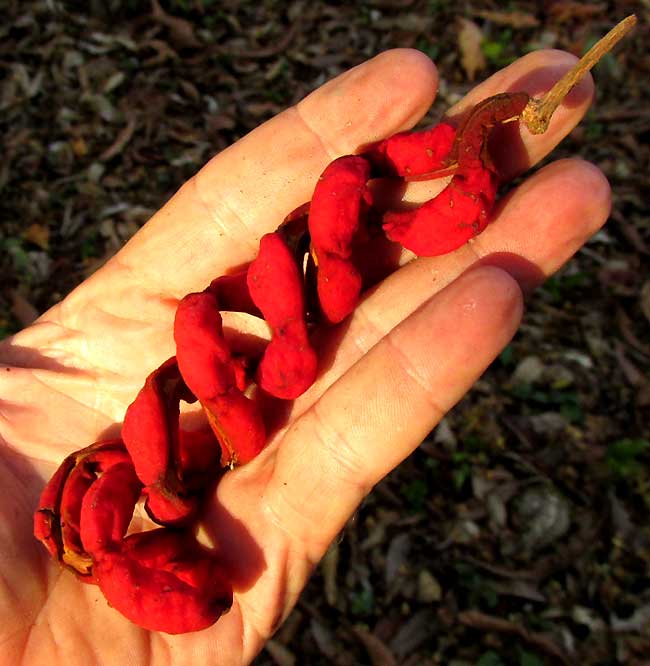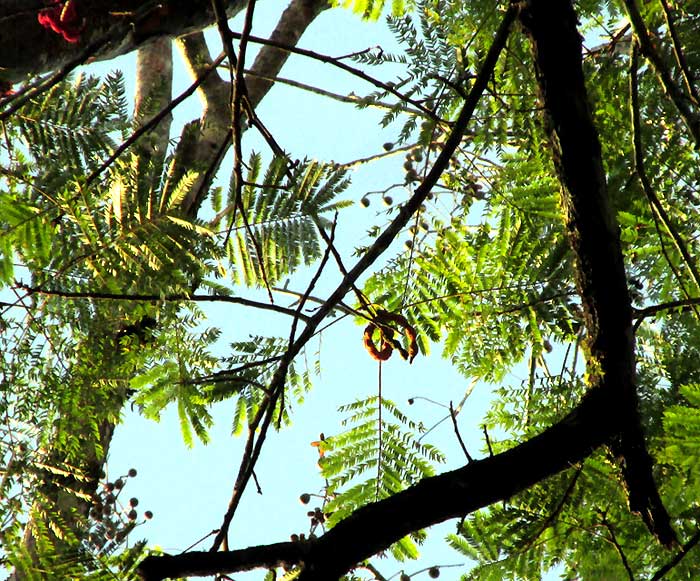Excerpts from Jim Conrad's
Naturalist Newsletter
from the April 27, 2019 Newsletter with notes from an early April camping trip in the Petén department of northern GUATEMALA
COJOBA TREE FRUITING
Earlier this month, on April 3rd, as I wandered the campground of El Rosario National Park in northern Guatemala's lowland Petén department, on the east side of Sayaxché, two brightly red, legume-type fruits spiraling around one another like DNA's double helix turned up on the ground beneath a big tree, shown below:

Often we've seen such curling, red-turning legumes on Bean-Family trees known as Blackbeads (because of their hard, shiny and black beans). Our page for the commonly occurring Blackbead tree is at www.backyardnature.net/mexnat/pithecel.htm
That Blackbead species is a member of the big genus Pithecellobium. Paul Standley and Julian Steyermark in 1946 recognized about 30 Pithecellobium species for Guatemala, and this campground tree's fruit looked a little different from those of the common species. Happily, the big tree overhead bore not only the same red, spiraling legumes, but also distinctively large, twice-pinnately compound leaves with very many small leaflets -- very different from the common species -- as shown below:

The curling legumes appear at the center of the above picture.
In the end, it turns out that our big tree in Guatemala doesn't belong to the assumed genus Pithecellobium -- though it did until recently, and earlier was placed in the genera Mimosa and Acacia as well. Nowadays the gene sequencers have decided that it's unusual enough to merit assignment to yet another genus, where it's known as COJOBA ARBOREA. It's distributed from southern Mexico and the Caribbean area south through Central America to Bolivia in South America. It inhabits moist or wet forest, and often appears on soil derived from limestone, as was the case with ours.
Cojoba arborea bears no generally accepted English name, though sometimes its valuable wood is exported under the name of "Bahama sabicu." The tree can grow to about 18m high (59ft).
Several similar species exist. Important field marks leading to Cojoba arborea include the large leaves with many small leaflets, and the legumes tending to occur in pairs, often winding around one another, and attached to a short, woody stem, as shown in our picture.
Apparently the seeds of Cojoba arborea are adapted for germination as soon as they fall. I read that after ten days of storage 20% of the seeds had lost their viability, and after 25 days 100% were dead. Fresh seeds show a 90% germination rate on soil containing 30% organic matter.